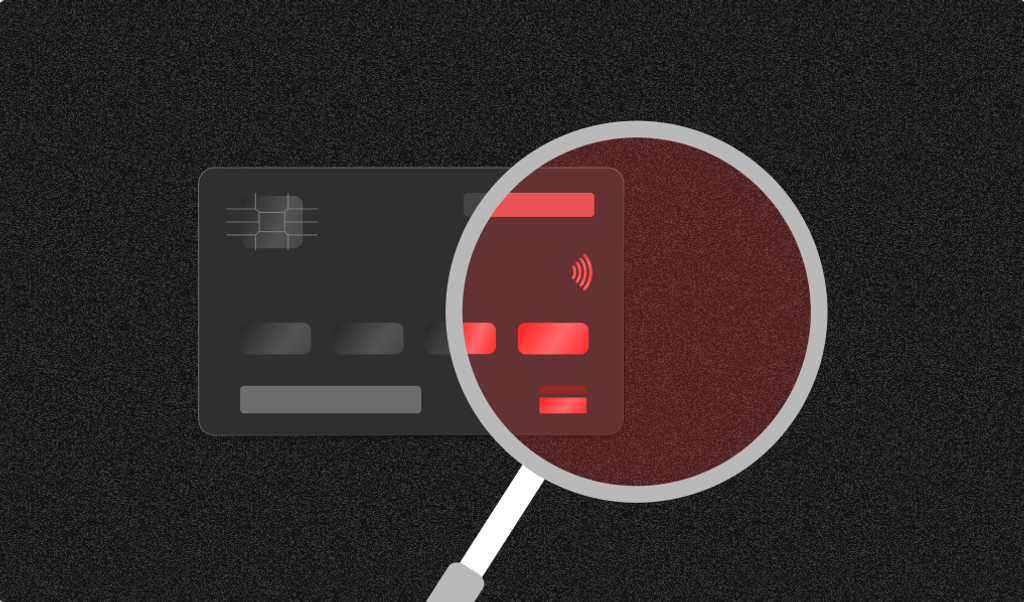
Summarize this article with
Visa is changing how it calculates and penalizes chargeback ratios and card testing, which could mean more penalties on card-not-present (CNP) transactions. Certain fraud-fighting approaches, especially those outlined in Compelling Evidence 3.0 (CE 3.0), have become even more important to merchants’ efforts to minimize fraud and the fees that come with it.
What’s changing with VAMP
The changes are consolidated into a new program called Visa Acquirer Monitoring Program (VAMP), which went live in an advisory period in April 2025 and will be enforced starting in October 2025, with ratios tightened in 2026.
If you’re unfamiliar with chargebacks, which is the process of resolving a dispute by a cardholder, we cover how you can prevent chargebacks in this post. It’s also important to understand the distinction between third-party fraud, where someone uses a card without authorization, versus first-party or friendly fraud, where the cardholder disputes a legitimate purchase to avoid paying for what they bought. (Confusingly, this latter kind of fraud is known as “non-fraud” in the context of VAMP.)
Note that retailers pay a fee on every chargeback, even if they win, in addition to the time and resources involved in challenging a dispute. They also risk higher transaction costs with their acquirer (the company that processes credit cards) if their ratio of chargebacks to transactions gets too high.
With VAMP, the way that the ratio of chargebacks to transactions is calculated and the percentage thresholds for fees are changing. Acquirers, under pressure to maintain lower ratios across their portfolio, may soon pass along similarly tightened ratios. Here are the most important aspects to VAMP:
- Less distinction between fraud and non-fraud disputes. Most disputes factor into a single ratio: total disputes divided by number of transactions.
- Fraud disputes settled through the Rapid Dispute Resolution (RDR) and the non-Visa equivalent Cardholder Dispute Resolution network (CDRN) were going to be exempt, but they will no longer be. (Non-fraud ones never were.)
- Chargebacks successfully deflected by Compelling Evidence 3.0 continue to be exempt from the ratio.
- Merchants now risk fines for high-volume card testing, in addition to the chargeback thresholds.
Starting in April 2025, the ratio is 0.5% for acquirers and 1.5% for merchants before fines kick in. In 2026, there’s a two-tier system of 0.3% and 0.5% for acquirers, while the merchant threshold is 0.9%. After crossing these limits, merchants and acquirers face $5 and $10 fines respectively for each chargeback. The merchant ratios also have various monthly transaction volume thresholds before they kick in.
There are some region-specific variations: for example, Middle East and North Africa (MENA) will have a higher percentage allowance but a lower volume threshold in 2026, and merchants in Europe and Asia-Pacific (APAC) avoid the fine if they’re being charged a fee for a chargeback on a transaction they didn’t directly approve.
Once a merchant or acquirer crosses the ratio, every single chargeback incurs these fines — not just the ones that exceed the limit — until your chargeback ratio falls below the line. Ratios are evaluated monthly, so these fines can really add up, even if you’re only a bit above.
Finally, for those who've previously contended with this sort of ratio, note that the Visa Dispute Monitoring Program (VDMP) and Visa Fraud Monitoring Program (VFMP) have been superseded by VAMP.
How VAMP impacts merchants
Fraud is now even more costly for merchants — even if you do the right thing and decline a bad transaction. Here’s why.
- RDR doesn’t keep third-party fraud from counting against you. It’s now harder to avoid penalties for third-party fraud. RDR, which lets you respond to a chargeback notification with a refund, still avoids the costly dispute process. But it does not remove the chargeback from your ratio calculation if the reason was a stolen card.
- Excessive card testing is now a basis for fees. If you’re subject to a lot of card testing, which Visa calls enumeration, you also risk fines — regardless of whether you approve or decline the transaction. If your enumeration ratio exceeds 20%, as calculated by Visa, you could be fined $10 per chargeback.
- No more exemptions for high-risk merchant category codes (MCCs). Merchants in certain MCCs, such as gaming and travel, used to be afforded a relatively generous 1.8% chargeback ratio, with Visa implicitly accepting that they are more subject to fraud. These MCCs and their acquirers are now subject to the same limits.
- Your acquirer may hold you to higher standards. Acquirers are held to slimmer chargeback ratios than individual merchants. This means that most of their merchants must come in far below the merchant limit for them to be compliant. Accordingly, acquirers may impose their own penalties or higher processing fees on merchants in certain MCCs or with a track record of higher chargeback or enumeration rates.
Reduce your chargeback ratios with device intelligence, threat detection & Rapid Dispute Resolution
- Implement device fingerprinting, which meets Compelling Evidence 3.0 (CE3.0) criteria as an accepted data element, against friendly fraud. By proving that the person who completed a transaction is a cardholder who purchased from you before, you can overturn their claim that their card was stolen. Visa has maintained CE3.0 as a way to expunge chargebacks from your record, so it is well worth using it whenever possible.
- Keep fraudsters away from your checkout. The surest way to reduce your enumeration ratio is not let fraudsters try their cards on you. Use tools like bot detection to detect and block card testing and other suspicious behaviors resilient forms of identification such as device fingerprinting to prevent return fraudsters.
- Consider using RDR to settle certain non-fraud disputes. While RDR no longer exempts third-party fraud claims from the chargeback ratio, it still takes non-fraud disputes out of the chargeback ratio. So, if you give in and refund a customer who claims that you didn’t deliver a product or service as promised before the official chargeback process kicks off, you save on both chargeback fees and preserve your ratio. It’s akin to settling a lawsuit out of court. Many services even allow you to automate this pre-chargeback resolution based on factors such as dollar amount, product type, and your own customer information.
How device intelligence helps
Device intelligence collects browser, device, and network signals to distinguish one visitor from another. It allows you to recognize a returning user’s browser or device, even before they’re logged in, and to gather lots of useful (yet anonymized, hence privacy-friendly) data for understanding anonymous traffic.
Fingerprint’s device intelligence platform offers industry-leading accuracy and can help merchants win non-fraud disputes by proving that the device used to make the purchase matches the cardholder. Additionally, Smart Signals like Bot Detection and High-Activity Device Detection can flag suspicious behaviors so your risk and fraud teams can decide what actions to take, if any.
Learn more about how Fingerprint helps thousands of companies reduce payment fraud. Or try it out yourself with a 14-day free trial.
FAQ
The Visa Acquirer Monitoring Program (VAMP) holds merchants and acquirers (credit card processors) to tight chargeback and enumeration (card testing) standards. If they surpass certain percentages of total transactions, they are charged additional per-chargeback fees. The new standards replace two previous ratio schemes as of April 2025.
Starting in April 2025, the ratio of chargebacks to total transactions is 0.5% for acquirers and 1.5% for merchants before fines kick in.
In 2026, there’s a two-tier system of 0.3% and 0.5% for acquirers, while the merchant threshold is 0.9%. Fees are $5 or $10 per chargeback, respectively, depending on the tier. For card testing, merchants with so-called enumeration transactions — whether approved or declined — exceeding 20% of successful transactions are subject to a $10 per chargeback fee.
Lower your chargeback and enumeration ratios with device intelligence. Successful Compelling Evidence 3.0 defenses remove friendly fraud chargebacks from your ratio; device fingerprinting meets the criteria as an accepted data element. Use Fingerprint Smart Signals like Bot Detection and High-Activity Device Detection to flag suspicious behaviors to block card testing.



